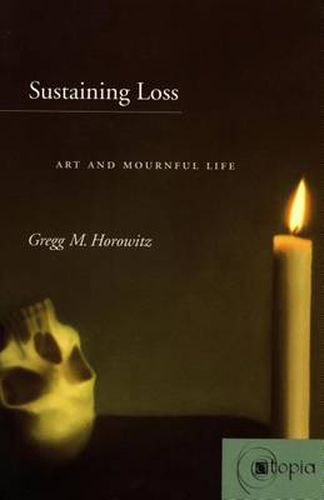Readings Newsletter
Become a Readings Member to make your shopping experience even easier.
Sign in or sign up for free!
You’re not far away from qualifying for FREE standard shipping within Australia
You’ve qualified for FREE standard shipping within Australia
The cart is loading…






Sustaining Loss explores the uncanny, traumatic weaving together of the living and the dead in art, and the morbid fascination it holds for modern philosophical aesthetics. Beginning with Kant, the author traces how aesthetic theory has been drawn back repeatedly to the moving power of the undead body of the work of art. He locates the most potent expressions of this philosophical compulsion in Hegel s thesis that art is a thing of the past, and in Freud s view that the work of art is the haunting of the present by the endless suffering of what is dead but still has claims over the living. The book asserts that modern aesthetics holds the key to unlocking the tortured relation of modernity to the past it is perpetually leaving behind. As the capacity to withstand the inescapable force of a past that is dead for us becomes the supreme test for a fully modern, fully secular philosophy, aesthetics moves to the center of philosophical reflection. But, the author argues, this secular philosophical orientation can be sustained only if aesthetic theory remains oriented by intimate contact with modernist works of art.
$9.00 standard shipping within Australia
FREE standard shipping within Australia for orders over $100.00
Express & International shipping calculated at checkout
Sustaining Loss explores the uncanny, traumatic weaving together of the living and the dead in art, and the morbid fascination it holds for modern philosophical aesthetics. Beginning with Kant, the author traces how aesthetic theory has been drawn back repeatedly to the moving power of the undead body of the work of art. He locates the most potent expressions of this philosophical compulsion in Hegel s thesis that art is a thing of the past, and in Freud s view that the work of art is the haunting of the present by the endless suffering of what is dead but still has claims over the living. The book asserts that modern aesthetics holds the key to unlocking the tortured relation of modernity to the past it is perpetually leaving behind. As the capacity to withstand the inescapable force of a past that is dead for us becomes the supreme test for a fully modern, fully secular philosophy, aesthetics moves to the center of philosophical reflection. But, the author argues, this secular philosophical orientation can be sustained only if aesthetic theory remains oriented by intimate contact with modernist works of art.